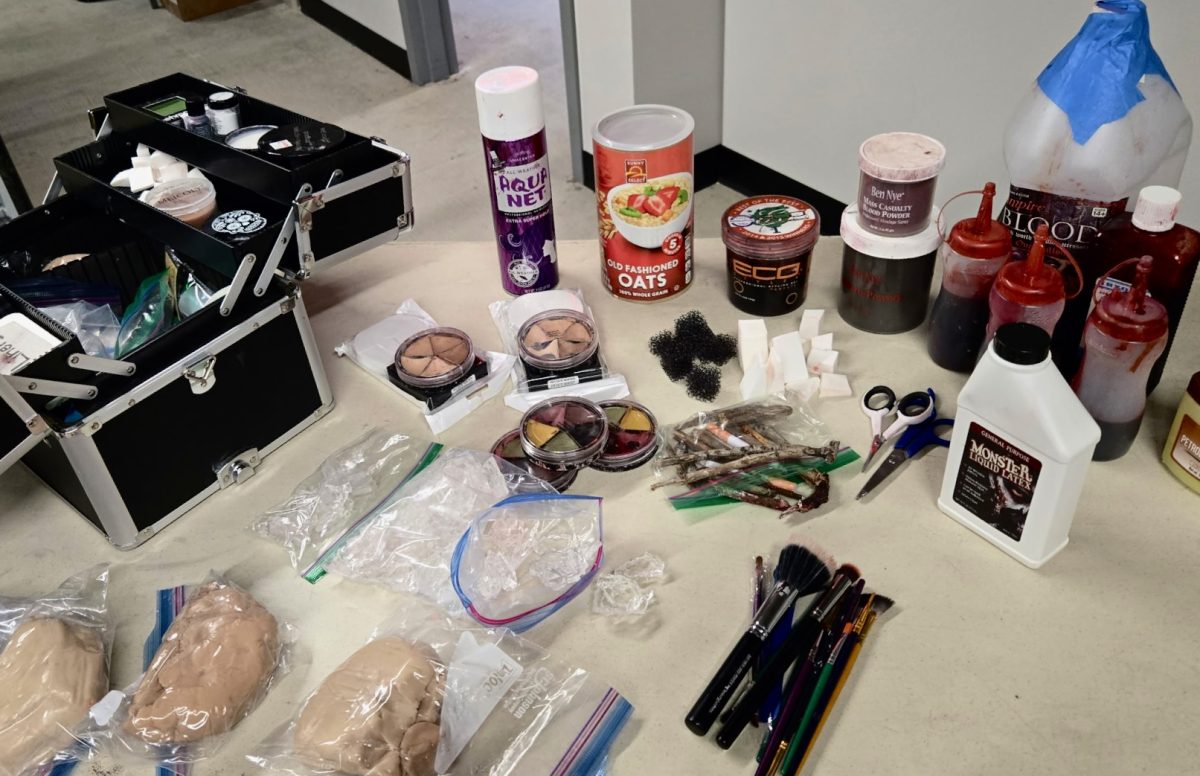
Tools for SFX makeup used by Sloane Smith '27. Photo provided by Sloane Smith '27
In any movie featuring gory injuries, those cuts and bruises are likely the work of special effects (SFX) makeup. Moulage is the art of using SFX makeup to simulate injuries or illnesses for medical or military training purposes. Sloane Smith ‘27 has been collaborating with the Community Emergency Response Team (CERT) training program for the Woodside Fire Protection District, providing moulage simulations for the program’s final assessment.
Selena Brown is the public education officer and emergency preparedness coordinator for the Woodside Fire Protection District and has been working with this program for 14 years.
The CERT program trains residents to respond to disasters in order to support the fire department and other residents. They are trained on medical operations and damage assessment, search and rescue protocol, and organized responses to disasters. The CERT program is a month-long training course that takes place twice a year and ends with a final practical exam.
Smith is in charge of the moulage injury simulations for the exam so that the trainees can react to real-looking scenarios. Smith was trained in SFX makeup at summer camp and then became very interested in more ways to apply and practice her skills during the COVID-19 pandemic. With the CERT program, she goes twice a year for about two hours and does moulage makeup for the simulation.
Even though the moulage is just a small part of the simulation, it really elevates the training experience, making it much more realistic. Brown explained that even though participants are told the injuries are fake, “the moment they see red blood, or a black and blue face…it triggers a natural, primal instinct of fight or flight.” Because it is such an important part of the training experience, they work very hard to make the moulage as detailed as possible.
Smith loves moulage for the opportunity it gives her to learn, especially since a lot of these injuries are ones you never want to have to see. She says that “it’s an interesting way to apply [her SFX training] and understand illnesses or injuries more by actually having to create them on someone else.”
Some of the injuries that can be simulated with moulage are lacerations, abrasions, broken bones, burns, and smoke inhalation. Smith said that her favorite injuries to replicate are third-degree burns.
The materials used for moulage are often low-budget household items, which makes the results even more incredible. Fake skin can be made out of petroleum jelly, cornstarch, and cocoa powder. Prosthetics are also often used to replicate injuries like exposed broken bones or impaled objects.
During the simulation, the injured people are usually volunteers who come for the day. Brown shared a funny story about one young volunteer, saying that she had a girl come in from a local high school, and “she was extremely quiet, and didn’t say one word the whole morning,” so they ended up giving her a simulated stick through her arm. As soon as the drill started, however, “she was screaming at the top of her lungs, and scaring the CERT people.” She was one of the best volunteers Brown has ever had, despite her unassuming start.
Smith’s talents in moulage and continued efforts greatly affect the efficiency and accuracy of training for real-life emergency scenarios: according to Brown, “it really helps them get into that, ‘oh wow, it really feels real.’”